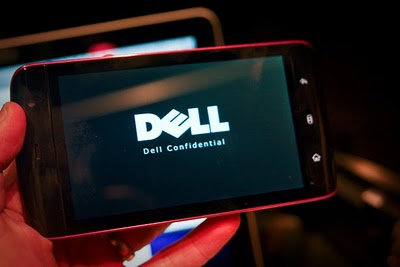
Fujitsu P3010
As of this moment, I don’t have enough fingers to count the amount of oversized netbooks that are being sold in retail. Oversized netbooks typically have 11 to 12-inch widescreens and have parts with names like Nvidia’s ION, AMD’s Neo, VIA’s Nano, and the most popular of which, Intel’s Atom. Fairly late to the game is Fujitsu’s LifeBook P3010, an 11-inch, oversized netbook that runs on AMD parts, which have an edge in speed over the Intel Atom but trails it in battery life. Even if Fujitsu were to knock down the price from $549, it would still be just an okay netbook.Design I’m usually a sucker for vibrant colors. The P3010’s shiny red plastics, though plain in design, still grabs a hold of your attention immediately and beats the drab, neutral hues found on the Lenovo IdeaPad S12, Samsung NC20 (21GBK), and MSI U210 (008US). Over on the corner of the lid is Fujitsu’s signature infinity logo, which is always a nice finishing touch. It’s a heavy netbook, though, as its 3.5-pound frame outweighs many of its netbook peers, including the Asus EeePC 1101HA (3 lbs), HP Mini 311 (3.3 lbs), and MSI U210 (3 lbs). Only the HP Pavilion dv2-1030us is heavier, tipping the scales at 3.8 pounds.
As with any oversized netbook, the sweet spot is the extra screen real estate. The P3010 has an 11.6-inch widescreen, which not only gives you more to look at than the typical 10-inch ones, but the resolution is higher as well. Case in point: Ten-inch netbooks like the Toshiba mini NB205 and HP Mini 5101 default to 1,024-by-600 resolutions; the P3010, like all oversized netbooks, has a 1,366-by-768 one, or WXGA. Oversized netbooks like the Lenovo S12, Samsung NC20, and MSI U210 have bigger 12-inch widescreens, which you might consider if you want to push this boundary.
Features Another thing that the P3010 can afford to do with a bigger screen (hence, wider dimensions) is put in a full size keyboard. Its keyboard size is comparable to the ones found in the Lenovo S12, Samsung NC20, and MSI U210. In contrast, others in its size class, namely the HP Mini 311, ASUS 1101HA, and HP dv2, top out at 92% of full size. The touchpad seemed agonizingly small at first, but wrapping the chrome mouse buttons around the front bezel, thereby widening the pinch between the thumb and index fingers (used to navigate), made it tolerable. Nevertheless, Fujitsu needs to find a way to increase the size of the touchpad.
The P3010’s other features are average at best. Its most glaring omission is an HDMI port, given that the HP dv2 and MSI U210—netbooks that run on similar AMD parts—are including it. The three USB ports can be found in smaller 10-inch netbooks and 802.11g Wi-Fi seems average, too, when others are bundling 802.11n. Fujitsu is including a 320GB hard drive, though, which gives you more storage than MSI U210’s 250GB drive. Aside from that, it has Bluetooth, a 4-in-1 media card reader, Webcam, an Ethernet and a VGA port.
Performance
To date, I’ve looked at about four netbooks that run on the 1.6GHz AMD Athlon Neo MV-40—a single-core processor and one of AMD’s answers to the Intel Atom. A dual-core Neo is already shipping, but hasn’t shown up in many netbooks. The advantage of using an AMD Neo is that there isn’t a RAM restriction (Intel Atom-based netbooks can only ship with 1GB of RAM, but can be manually upgraded to two), so the P3010 ships with 2GB of DDR2 memory. In terms of raw speed, the Neo is a faster processor than the Atom; its score on our video encoding tests bears this out: The P3010’s 3-minute 56-second score convincingly beat out the Lenovo S12 (4:40), Samsung NC20 (5:30), and ASUS 1101HA (5:32). It has a minor graphics advantage, too, as the ATI Radeon 3200 chipset (with the Neo processor and 2GB of memory) handled high-definition clips (1080p and 720p) reasonably well; at least better than with Intel’s integrated graphics.
As a result of using AMD chips, the P3010 had to sacrifice battery life. As with the MSI U210 (4:13) and the HP dv2 (3:08), the P3010’s 3 hours 25 minutes score on MobileMark 2007 is sufficient enough for a half-day’s work, but falls well short of the 5- to 7-hour scores amassed by the Lenovo S12 (5:19), ASUS 1101HA (6:50), and HP Mini 311 (5:29). Against a smaller netbook like the Toshiba NB205 (8:27), the P3010 gets less than half its battery life.
It’s hard enough to compete as a latecomer, but when you’re priced more than similar netbooks (i.e, the MSI U210 runs for $430), it makes the Fujitsu LifeBook P3010 difficult to recommend. The P3010 does have very good qualities for a netbook, such as speed, ability to playback HD video, and a full size typing experience, but its battery score and price can’t compete with its peers. Consider the MSI U210 and the Lenovo IdeaPad S12 instead.
 Dell Mini 5 will present the design of mobile tablet with a larger screen size, which is five inches. “Dell Streak will be present with a combination of traditional smart phones and tablets big sail,” says Ron Garriques, Communications Solutions Group, Dell’s president, quoted from page Cellular News, Wednesday, May 26, 2010.
Dell Mini 5 will present the design of mobile tablet with a larger screen size, which is five inches. “Dell Streak will be present with a combination of traditional smart phones and tablets big sail,” says Ron Garriques, Communications Solutions Group, Dell’s president, quoted from page Cellular News, Wednesday, May 26, 2010.


